source: 谷歌云T2A实例发布,TOP公有云都有ARM主机了 - OFweek云计算网
Recently, Google Cloud announced the release of an ARM host, the Tau T2A instance using Ampere processor. At this point, the first few major public cloud manufacturers have launched ARM cloud host.
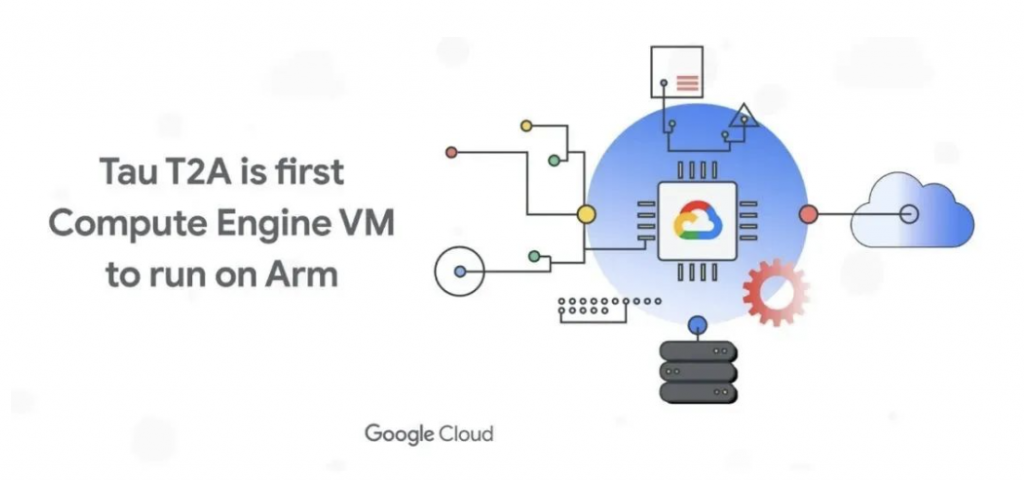
Google employee No. 8, the vice president of infrastructure Urs H? Lzle has asserted that a 20% improvement in price/price ratio would lead to a shift from x86 to Power, not necessarily Power, but any other architecture.
As you might expect, the first question is, how do you use an ARM processor?
It's not hard to imagine Google building its own search engine, advertising, and video streaming platforms that can be migrated to ARM processors, but Google Cloud, as a cloud service provider, can't easily migrate existing applications from x86 to ARM. How can you convince customers to use ARM hosts? The industry has also had quite mature exploration. Amazon Cloud Technology's Graviton processor ARM camp is a banner that tells everyone that ARM servers really can
Graviton has many fans because of its 40% cost-effective advantage. On the one hand, Amazon cloud technology uses its own cloud services, and on the other hand, Graviton directly sells to cloud service users, requiring applications to be migrated to ARM servers. In the past two years, domestic public cloud service providers UCloud, Tencent Cloud and Jingdong Cloud have successively launched ARM cloud host based on Ampere, and Ali Cloud has also announced Panjiku server based on self-developed processor.
In the international market, Oracle Cloud (OCI), Microsoft Azure also launched Ampere based ARM host. It was a bit of a surprise that Google Cloud recently launched an Ampere based ARM host, the last of the top cloud vendors to do so. Google's T2A instances currently support various common Linux distributions such as RHEL (Red Hat Enterprise Edition), Suse Linux Enterprise Server, CentOS, Ubuntu, and RockyLinux, as well as container-optimized operating systems.
In addition, Google Cloud's own Kubernetes container Engine, the GoogleKubernetes Engine, can also run on T2A, as can Google Cloud-hosted batch services and streaming analytics services. In practice, Google may also use it internally, for cloud-based management systems like Borg and Omega, which support search engines, ads, email, and other workloads. As internal workloads are gradually moved to the cloud, more services will be provided externally.
The Ampere website lists 135 common cloud-native applications, including databases, cloud-native software, and programming languages, and the number is growing. Google Cloud says that some ISV partners have had a smooth and easy transition to T2A. Maybe seeing Graviton3 come again, and seeing Microsoft, Oracle, Tencent, Alibaba and other cloud companies are doing ARM servers, Google is also a bit unable to sit still, so there is this release.
Good price ratio
Analysts believe that Ampere's ARM chip is used by many cloud service providers, so Ampere's cost advantage may be further amplified, which makes it easier to bring changes to the ultra-large scale data center market. Although Google has its own chips in its smartphones and is reportedly working on ARM chips for ChromeOS, there's still a big gap between consumer and server-grade chips.
It is uncertain whether Google will use self-developed ARM server chips in the future and walk on two legs like China's Aliyun. There are Ampere's third-party solutions as well as self-developed solutions.
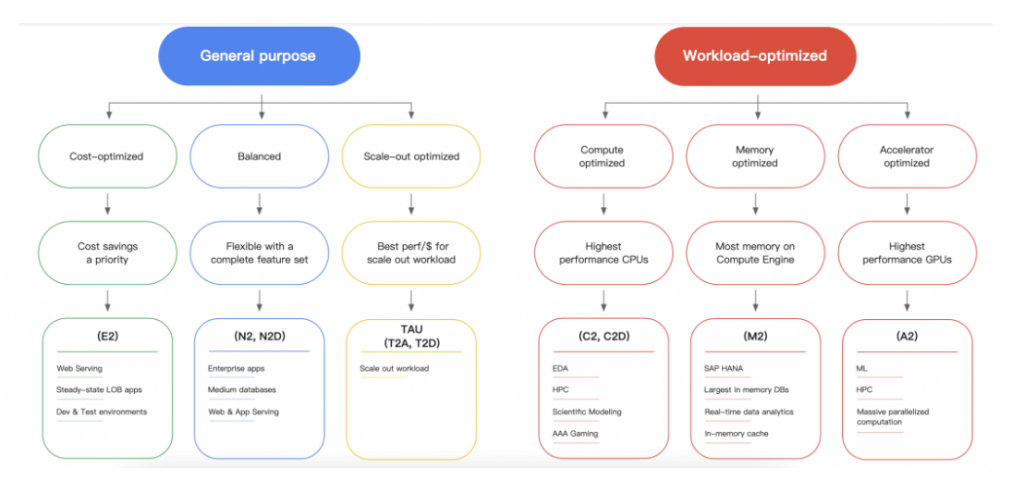
At present, the host of Google Cloud has evolved to the second generation, the first generation is mainly the solution of Intel platform. The second generation is divided into two categories, one is general type, the other is focused on optimization type. Examples of optimization include computational optimization C2 and C2D, memory optimization M2 and machine learning accelerated optimization A2.
While the generic load includes E and N2 and N2D, E2 uses CPU platforms based on performance, N2 uses Intel Xeon and N2D uses AMD Roller Coaster processors. And then there's the example of Tau, a Greek character for the golden ratio, a name that captures Google's desire for a new balance between computing, memory, and I/O. Special processor adjustments are made to provide better value for money on some workloads.
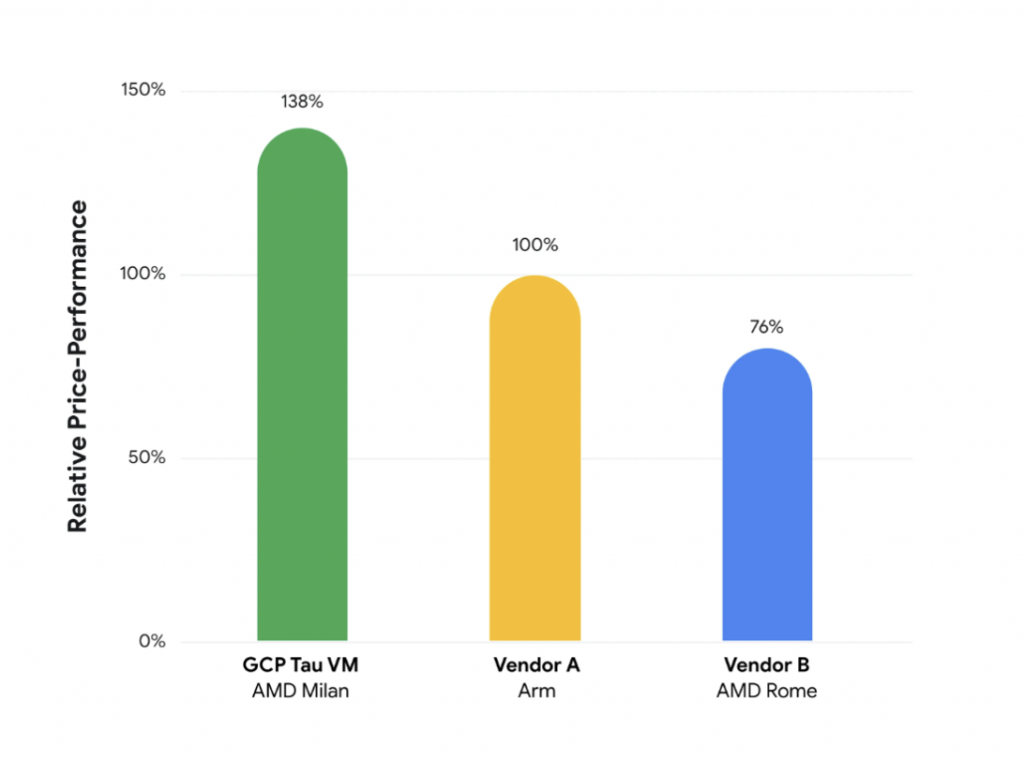
When Google Cloud released Tau series of examples last year, it emphasized that by using AMD's Milan processor to optimize the core number and clock frequency, the cost performance could reach or even exceed that of an ARM cloud host. Therefore, many people thought that Google would not consider launching ARM host in a short period of time.
The first instance of Tau is called T2D, which is based on AMD's "Milan" single-channel Epyc 7003 processor, and T2A is a new ARM instance based on Ampere's CPU. Ampere said in a press release that T2A virtual machine instances perform 31% better than current generation (second generation) x86 virtual machines in the Google Cloud and are 65% better in terms of value for money.
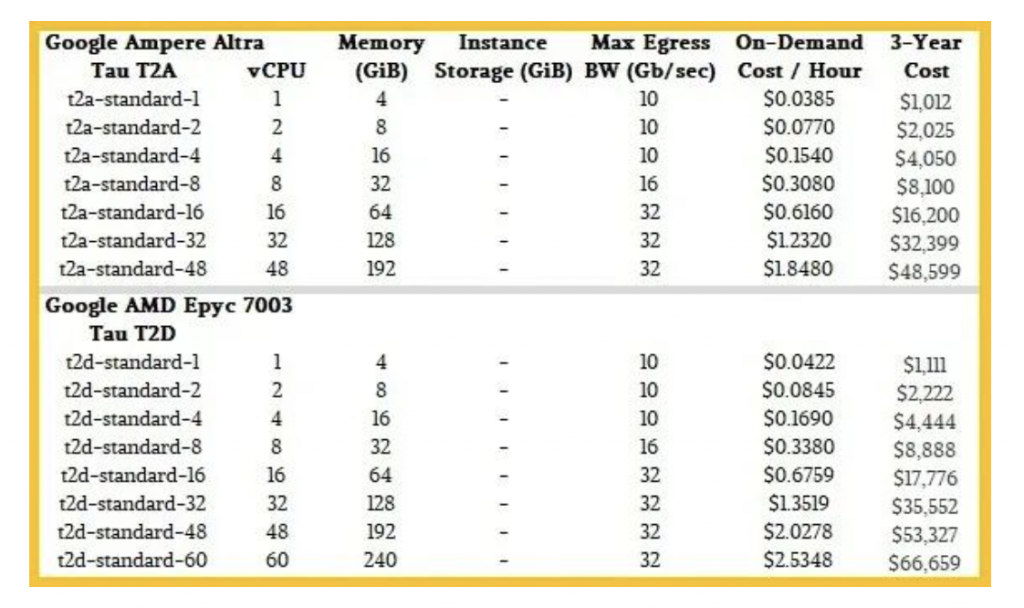
NextPlatform collects key information about T2A and T2D, as shown in the figure above. At present, the ratio of CPU cores and memory locked by Google hosts is 1:4, the highest allocation of ARM hosts is 48vCPU and 192GB memory, while the C7g ratio of Graviton3 adopted by Amazon Cloud technology is 1:2, which may be further enhanced by future memory optimization instances.
From Amazon cloud technology's Graviton to Alibaba's Yitian 710, and Ampere's ARM processors do not use hyperthreading technology, they all use single-core output single thread, the benefit is to make the performance more stable. Currently, cloud vendors with Ampere solutions use the 80-core Ampere Altra, not the 128-core Ampere Altra Max.
Also, none of the cloud vendors offer SKUs with 80 cores. Microsoft Azure offers up to 64 cores, while Google offers up to 48 cores, which may be a combination of yield and cost considerations.
What does the rest of the kernel do?
When T2D was released last year, AMD's Epyc 7003 offered up to 64 cores, but users could use up to 60 cores, with four cores for KVMhypervisior and storage and networking functions.
Microsoft Azure is supposed to have something similar to DPU. Google Cloud directly uses Intel's IPU, which should not be used to run the network and storage parts. The rest of the core may be split to other cloud hosts.
The ARM solution compares the performance and price of Microsoft Azure, Google Cloud and Amazon Cloud computing platforms (AMD, Intel and Ampere), as shown below:
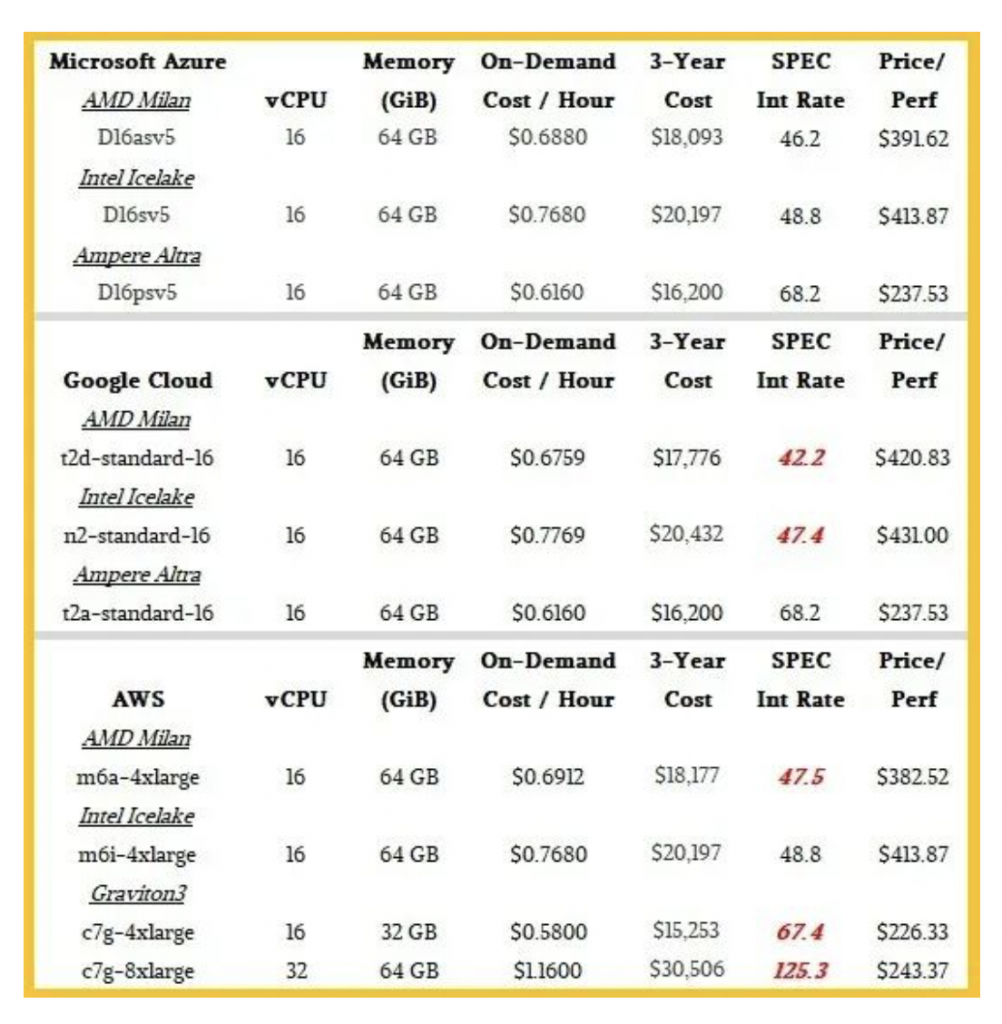
The scarlet letters in the figure above are estimated based on the existing 2017 SPEC Int Rate, which is mainly based on the data measured by Google Cloud and Amazon Cloud Technology.
Typically, the price increases linearly with the number of Vcpus. A closer look is interesting. The Google Tau T2A instance shown above and Microsoft Azure D Series are priced exactly the same for the same CPU and memory configuration.
As you can see from the figure above, ARM servers offer very good value in terms of integer performance, about 40 to 45 percent better than x86 servers.
Amazon Cloud Technology C7g comes with twice as much memory as others, but the price is not much lower than others, and the integer performance is not much different.
In addition, AMD's Roller 7003 can scale up to 64 cores, while Intel's Ice Lake can only scale up to 40 cores, which allows AMD to build larger instances and create more small instances on the same server.
In the super-large scale of cloud, the advantage of a large number of cores is more obvious, which may be the significance of Ampere 128-core processor. AMD also has the opportunity to launch 96-core Genoa and 128-core Bergamo. Another thing to note is that the price of ARM servers of the three cloud service providers is relatively tight, which may be negotiated, or it may be a price war.




No comments